[javascript protected email address]
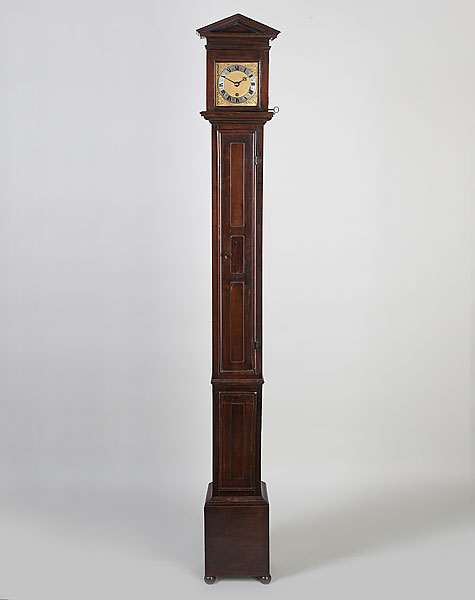
Samuel Knibb, London

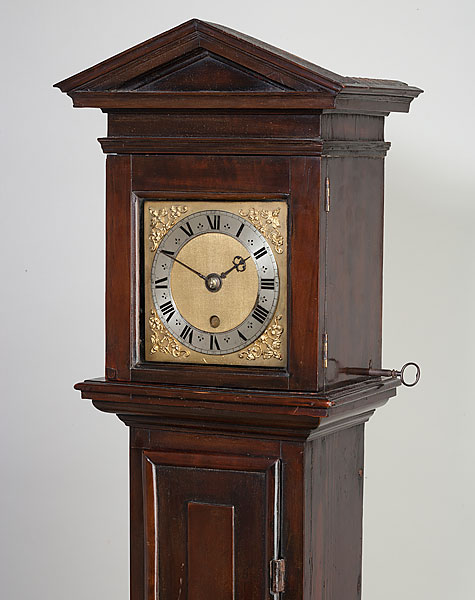
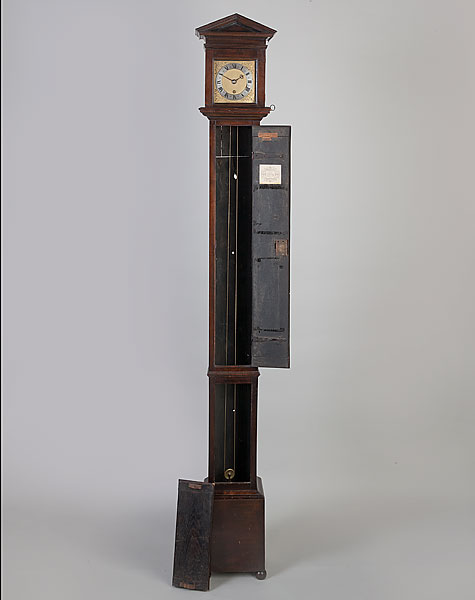
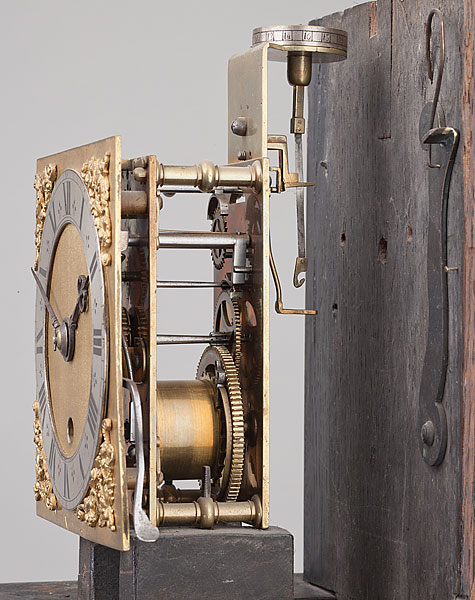
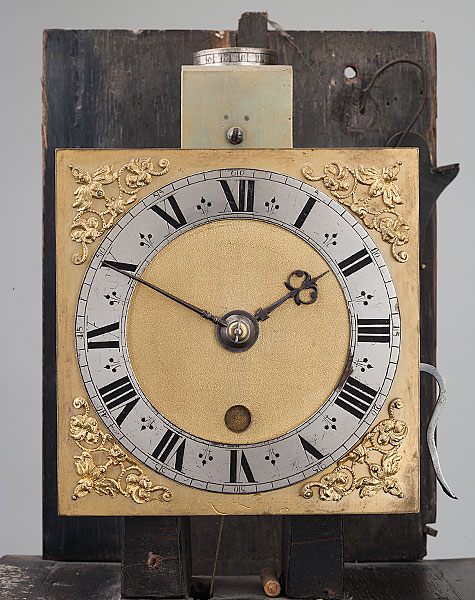
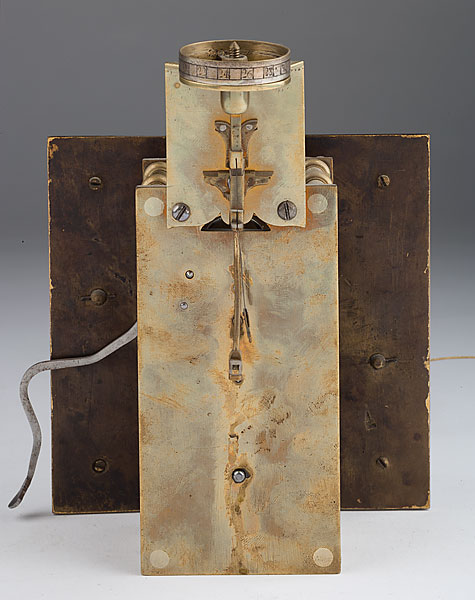
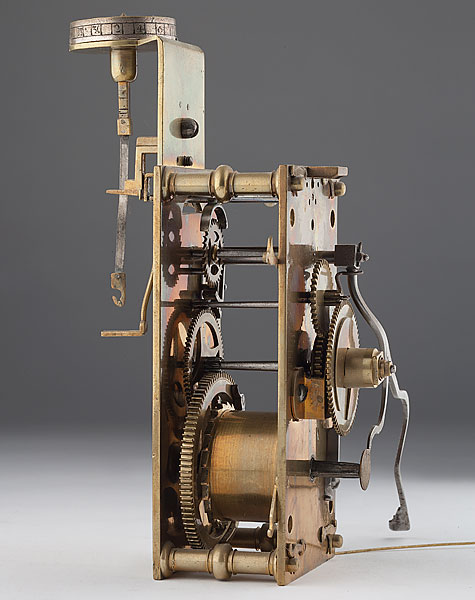
Circa 1665
Sold
An extremely rare ebonised fruitwood longcase timepiece of 10 day duration. CASE The diminutive case is surmounted by a rising hood with an architectural top and key lock to the right side; the narrow trunk has two panelled doors; the upper hinged door with key lock to the centre, iron strap hinges and printed label pasted to the inside for The First Twelve Years of the English Pendulum Clock Exhibition – Exhibit No. 16; the shorter removable paneled door below is secured to the case with internal swivel latches. The case is raised on a plain plinth, which rests on ebony ball feet. DIAL The 5¼ inch square gilt-brass latched dial is signed Samuel Knibb Londini Fecit flanked by unusual gilt-brass foliate spandrels, beneath the silver-faced chapter ring with Roman hour numerals with fleur de lys half-hour markers and outer Arabic five minute divisions. The blued steel hands are exquisitely pierced and sculpted and the centre of the dial is finely matted. MOVEMENT The simple going train movement has four ring-turned latched pillars, going barrel and four-wheel train, terminating with an anchor escapement with a 10 inch half-seconds beating brass-rod pendulum suspended from a hook and steel spring regulated from above by a brass ring engraved with a silvered calibration scale. PROVENANCE • Mrs. Charles Hoare, Kelsey Manor • Roger Aked Esq. • The collection of the late Geoffrey Heywood This unusual longcase clock is one of only two extant longcase clocks by Samuel Knibb and one of a total of only six clocks known to exist signed by Samuel Knibb. EXHIBITION AND LITERATURE The first twelve years of The English Pendulum Clock, Exhibit No. 16, loan exhibition at R A Lee, Bruton Place, London, 1969.
